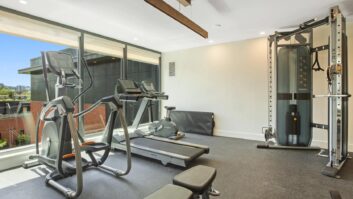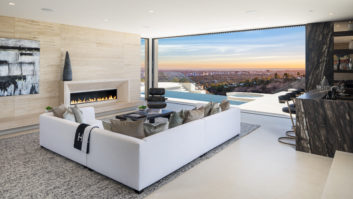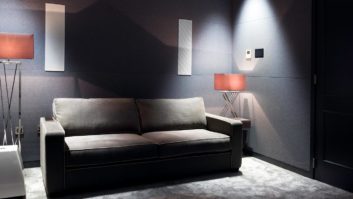Have you ever proposed a home theater to a customer only to scare them away with the high price of your design? Or did you ever feel like you left money on the table and undersold the customer?
If youve been in the home theater industry for any period of time, you most likely answered yes to both questions. As designers and project managers our goal is to hit the customers needs correctly the first time, but how do we do that?
Lets look at three keys to determining your customers needs for a home theater project. This is also known as needs analysis.
Key 1: Knowing Your Budget. How much is your customer really willing to spend? Based on interviews with dealers across the globe, a typical homeowner is willing to spend from three to seven percent of the total value of their home on electronics. The exact amount varies, of course, based on the homeowners financial status and their desire to embrace risk. Venture capitalists and entrepreneurs who make risk-taking part of their lives are typically more willing to invest in new technologies as well. Lawyers, accountants, and those who come from generations of money, tend to take fewer risks in life and as such will spend less on electronic enhancements to the home.
My experience and data from an informal survey of dealers across the country indicates the order in which customers typically purchase electronic systems.
1. Structured cabling
2. Entertainment, including whole-home
music and home theater
3. Lighting controls
4. Integration of HVAC, security, and lighting.
Knowing a reasonable range for a customer and the likely manner in which they will select electronic systems allows a residential integrator to quickly determine the home theater budget. We can further define the budget for a home theater by looking at how the theater costs will be spread among room treatments, electronics, installation, project management, and others areas.
Within of the total budget for a home theater project, the typical percentage breakdown is generally 50/50 between the electronic goods and services that your client will purchase and the room treatments, acoustic panels, seating, draperies, carpeting, millwork, etc. that they will buy. We can break down the electronics goods and services further into a 70/30 mix.
Looking further at the electronics, we can break it down like this:
435%Video, including projection systems and screens, or monitors
420%Audio, including processor, equalizers, amplifiers or receivers
410%Source equipment, including DVD player, digital video recorder,
satellite, etc.
420%Speakers, including front, surround, and subwoofer speakers
410%Control components, including items such as a system control,
touchscreen, hand-held remote, and emitters
45%Miscellaneous, including items such as power protection, cabling,
equipment racks, and other assorted supplies.
And looking into the services we find:
460%Installation
410%Design
410%Programming
420%Project Management
So what does analyzing the budget tell us? Lets look at a customer building a home in the suburbs of a major city. The home is in a northern climate, where homeowners will be spending a fair amount of time indoors. In addition, they have children that vary in age from three to 13 years. Because of this we can assume that they wish to create an environment where the neighborhood kids can hang out, thus keeping their children nearby and safe. The home value is approximately $2 million.
We can determine the value of the home by comparing it with others in the neighborhood, by looking at the permit that was pulled, and by talking with the general contractor about things like the square-foot cost of the home. We can chat with the customer and invite them to the showroom. There we can take note of what kind of car(s) they own, how they dress, and how they carry out their day-to-day lives. Do they have a nanny for the kids, or perhaps a nanny for each child? All of this provides us with a sense of their budget. This budget is established based on our understanding of the industry and from using the generally accepted percentages laid out earlier in this article. We should never ask our customer to tell us the budget of their project.
Based on this information we will set a reasonable budget of $150K for all electronic systems for the customer, and from there we will set a budget of $50K for the theater, leaving an additional $100K for other systems in the home. We can then narrow down and see that we have roughly $12K to $14K for the projection system. Does this sound about right? Perhaps… Lets move on from here to determine what kind of projection system to choose.
Key 2: What About Video? How do we determine what video equipment is appropriate for our customers? Do we ask them if the want DLP or CRT, or the Bindford-2000 Xtreme? Thats like having the architect asking the customer if they want the three-quarter or half-inch sheathing on the outside of their home. It is an unfair question. Lets instead ask the following:
How much time is spent with the televisions on in a typical week?
What percentage of time do you spend watching each of the following
categories (total should be 100 percent): Movies, sports, news, family,
educational, broadcast shows?
What television providers have you used in the past or wish to consider?
Direct TV satellite, cable television, Dish Network satellite, HDTV cable, HDTV satellite, HDTV off air, DVD, video tape, digital video recorder.
What does this tells us? Lets look at two examples.
A customer states that the television is on only one hour per week, to watch the news. He states that the only thing he would consider is cable television. From here we can determine the need for a high-end video system is minimal. Another customer states that the television is on 30 hours per week, and 70 percent of that time is spent watching movies from the 1950s and early 60s. They record their broadcast shows, enjoy high-definition specials from channels such as Discovery, and currently have a satellite system. Not only have we learned that this customer places a high importance on video, but we can also determine the need for a wide screen, based upon the fact that movies of the 50s and early 60s have aspect ratios of 2.35:1 and even as large as 3.0:1. Based upon the size of the room, this customer would have anywhere from a 1.85:1 to 2.35:1 aspect ratio. This allows for viewing of movies and high-definition formats.
How do we select the appropriate screen size? We start by determining the distance from the screen to the primary seating position and set the top to bottom viewing angle to not exceed 15 degrees from the plane cut by the viewer. The width can then be determined by the aspect ratio of the screen appropriate for the customer viewing habits. We never ask the customer what size screen they want.
Key 3: Selecting the Audio. The last piece is to select the audio portion of the theater. We can quickly use our budgets to formulate a rough idea of what the audio system should include. At the higher end we can include separate amplifiers, equalization, and even balanced audio connections. And at the lower end, the system will include a surround sound receiver.
How do we determine how many channels the audio system will contain? The 5.1-channel systems are placed in smaller rooms and 7.1 channel systems are placed in larger rooms. So how do we define a smaller room versus a larger room? In larger rooms, the distance from any of the surround speakers is at least four feet to any of the listeners, and the back row of seating is at least three feet from the back wall.
How do we decide how many subwoofers to provide in our home theater? It has been found that a single subwoofer can reproduce bass accurately in one seating position in a theater. However, using multiple subwoofers and placing them at key locations within the theater will provide uniform bass response to each of the theater seats. If we conclude that more subwoofers are better, then the budget will help us decide how many subwoofer we can afford.
Pulling It All Together. Understanding the overall budget for the project and also the purpose of the theater will allow a designer or project manager to accurately determine the needs of the customer. We never ask a potential client about technologies or budgets, instead try to determine their lifestyle and needs. From there, let that information drive the technology requirements and the budget that is suitable for them to enjoy a quality cinematic experience in their home.
Todd B. Adams is a CEDIA Certified Instructor and CEDIA Certified Electronic Systems Designer. He is co-author of Residential Integrators Project Management.






